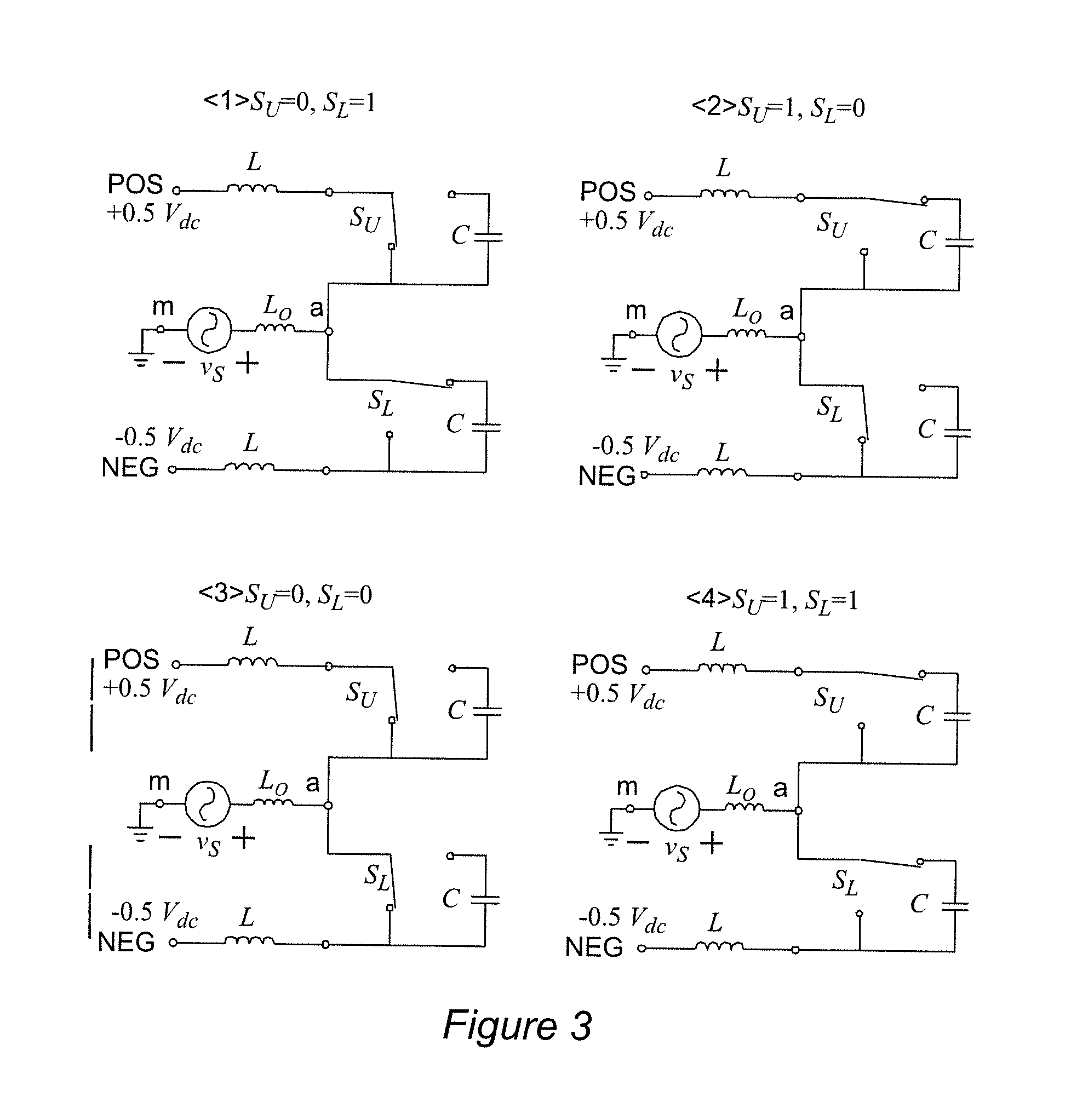Power-Cell Switching-Cycle Capacitor Voltage Control for Modular Multi-Level Converters
a technology of switching-cycle capacitors and converters, applied in the field of modular power converters, can solve the problems of limiting the potential power density of the converter modules, reducing the size or value of the capacitor, and stressing the switches of the modules, so as to reduce the capacitor value and size requirements
- Summary
- Abstract
- Description
- Claims
- Application Information
AI Technical Summary
Benefits of technology
Problems solved by technology
Method used
Image
Examples
Embodiment Construction
[0032]Referring now to the drawings, and more particularly to FIG. 1, there is shown a generalized schematic diagram of a modular multi-level converter (MMC) to which the invention may be advantageously applied. While the basic architecture of the MMC illustrated in FIG. 1 is known, at the level of detail provided by FIG. 1, the invention may or may not be included since an embodiment including the invention would principally differ from known embodiments by having smaller capacitor and inductor values and sizes for a given ripple specification and different switching control which is only generically depicted in FIG. 1. It should also be noted that in most widely used known MMCs, the common DC capacitor, Ccom, is not necessary and not shown. However, in the switching cycle capacitor voltage control (SCCVC) of the present invention this capacitor is required to absorb switching frequency currents as will be understood from the following discussion although this capacitor may be omit...
PUM
 Login to View More
Login to View More Abstract
Description
Claims
Application Information
 Login to View More
Login to View More - R&D
- Intellectual Property
- Life Sciences
- Materials
- Tech Scout
- Unparalleled Data Quality
- Higher Quality Content
- 60% Fewer Hallucinations
Browse by: Latest US Patents, China's latest patents, Technical Efficacy Thesaurus, Application Domain, Technology Topic, Popular Technical Reports.
© 2025 PatSnap. All rights reserved.Legal|Privacy policy|Modern Slavery Act Transparency Statement|Sitemap|About US| Contact US: help@patsnap.com



